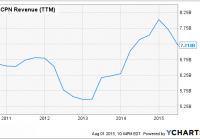Oil ETFs Slide Again: More Pain In Store?
After smooth trading in May and June, oil resumed its decline and trapped in the nastiest downward spiral in July joining the broader selloff in commodities amid the growing global glut and the China slowdown. In fact, U.S. crude oil lost nearly 21% in July, which was the worst month since October 2008. The rout worsened in the first session of August with crude plunging as much as 5% on Monday to around $45.17 per barrel. On the other hand, Brent oil dropped to below $50 per barrel for the first time since January. Inside the Recent Slump The brutal trading on Monday can be attributed to the increase in the number of rig counts, weak China manufacturing data, and downbeat U.S. economic data on manufacturing and construction spending that suggests tepid oil demand growth around the world. China manufacturing activity unexpectedly fell to a two-year low in July, adding to worries on the world’s second-largest economy. Meanwhile, U.S. manufacturing also slipped in July and consumer spending advanced at its slowest pace in four months in June, indicating that the world’s largest economy is losing momentum yet again. Coming to the supply side, the Organization of Petroleum Exporting Countries (OPEC) is pumping up maximum oil in the recent past buoyed up by higher output from Iraq and Saudi Arabia. It is currently producing about 32 million barrels a day against its target of 30 million barrels a day. Additionally, Iran, the world’s fourth-largest reserve holder with 158 billion barrels of crude oil, is gearing up to boost its production immediately after sanctions are lifted, which is expected in late November. As per Iran’s oil minister, Bijan Namdar Zanganeh, production will likely increase by 500,000 barrels a day within a week after relaxation in sanctions and by 1 million barrels a day within a month. Further, oil production in the U.S. has been on the rise and is hovering around its record level. ETF Impact Terrible trading has been felt in the ETF world as well, sending oil ETFs tracking the futures contract in deep red from a one-month look. In particular, the iPath S&P GSCI Crude Oil Index ETN (NYSEARCA: OIL ) stole the show tumbling 19.6%, followed by over 17% declines in the United States Oil Fund (NYSEARCA: USO ) ), the iPath Pure Beta Crude Oil ETN (NYSEARCA: OLEM ) and the United States Brent Oil Fund (NYSEARCA: BNO ) . Two of the most popular leveraged oil ETFs – the ProShares Ultra Bloomberg Crude Oil ETF (NYSEARCA: UCO ) and the VelocityShares 3x Long Crude Oil ETN (NYSEARCA: UWTI ) – dropped 46.4% and 33%, respectively, in the same time frame. The former provides twice the return of the daily performance of the Bloomberg WTI Crude Oil Subindex while the latter delivers thrice the returns of the S&P GSCI Crude Oil Index Excess Return. Both indices consist of WTI crude oil futures contracts. What Lies Ahead? With deteriorating demand/supply dynamics, the prospect of an oil price rebound in the second half looks faded. In fact, there is a clear sign that oil price might revisit its previous low of the year, pushing the oil ETFs further down. This is especially true as speculators betting on rising oil prices have fallen sharply in recent weeks. Hedge funds reduced their net-long position in WTI to the lowest level in five years for the week ended July 28, according to the U.S. Commodity Futures Trading Commission data. Further, money managers also cut their bullish bets on Brent by 37,527 contracts for the same week, representing the biggest decline since July 2014, as per data from the ICE Futures Europe exchange. That being said, inverse ETFs have been on the tear over the past one month with the VelocityShares 3x Inverse Crude ETN (NYSEARCA: DWTI ) , the ProShares UltraShort Bloomberg Crude Oil ETF (NYSEARCA: SCO ) and the PowerShares DB Crude Oil Double Short ETN (NYSEARCA: DTO ) gaining 68.4%, 42.2% and 30.9%, respectively. As a result, investors bearish on oil could make a short-term play on these ETFs for big gains in a short span, especially if the “trend remains a friend” in this corner of the investing world. Link to the original article on Zacks.com
